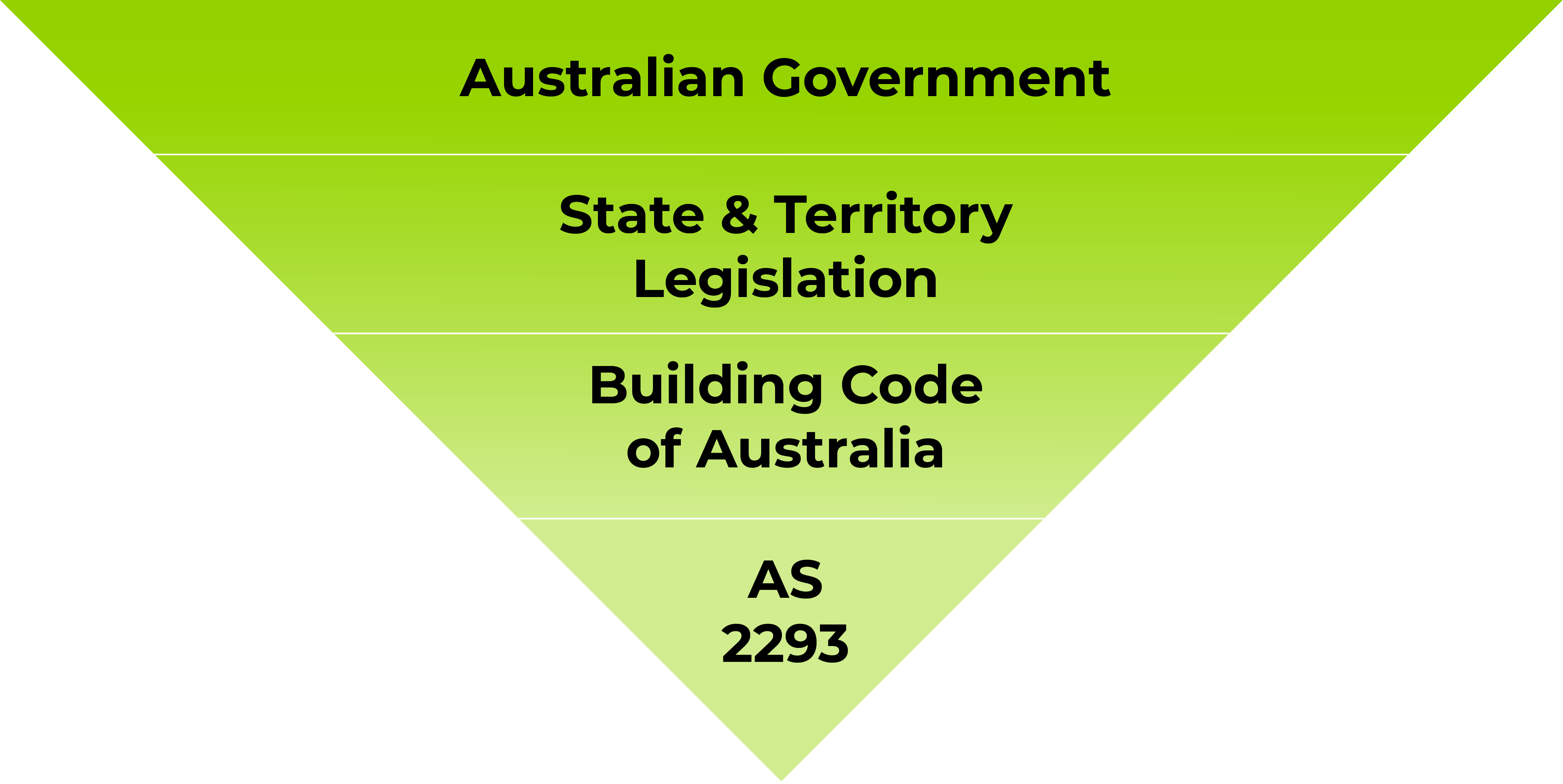All you need to know about Emergency Lighting Compliance in Australia
- What is the purpose of Emergency Lighting?
Emergency lighting provides sufficient illumination to safely evacuate a building in the event of a mains power failure. In Australia, all buildings must have an emergency lighting system capable of operating for a minimum of 90 minutes following a power outage.
- How is Emergency Lighting mandated/regulated in Australian Buildings?
The Australian Government through State and Territory Legislations gives effect to the National Construction Code (NCC). The First Volume of the NCC is the Building Code of Australia (BCA) which covers technical design and construction requirements for all Class 2 to Class 9 buildings — i.e., multi-residential, commercial, industrial, and public assembly buildings and their associated structures.
Part E4 of the BCA requires a level of visibility and directional signage to enable safe exit of the building. It further refers to the three-part series of Australian/New Zealand Standard
AS/NZS2293 which provides detailed information on design and installation within the building, as well as the operation, service and maintenance. The Standard also specifies the fixture design requirements for emergency luminaires and exit signs.
In addition to completed buildings, emergency lighting is also required for construction and demolition sites. Specific requirements for such sites are provided in AS/NZS 3012.
Hence, it is a mandatory requirement by law to have a fully operational and functional emergency lighting system in every building in Australia, which must be tested on semi-annual and annual basis.

- Have the regulations for emergency lighting stayed the same over time, or have they evolved?
Emergency lighting regulations have evolved in line with advancements in lighting technologies and building industry Standards. The Building Code of Australia is updated every 3 years and emergency lighting requirements are updated accordingly. For instance, peak lighting bodies are currently advocating for the removal of photoluminescent exit signs as an acceptable technology due to safety and compliance concerns observed since their introduction in 2014.
AS 2293 was formally adopted as a separate emergency lighting Standard in 1979 with the publication of AS 2293.1:1979. Since then, the AS 2293 series has been revised in 1983, 1987, 1995, 2005, 2018 and 2021, and is currently under review for another update.
Besides the AS 2293 series, AS 60598.2.22 and AS 61347.2.7 deal with the safety compliance of the luminaire and its control gear, respectively. Before installing any product, one must ensure that it meets the requirements of all three Standards.
- Is installation of an emergency lighting system enough for achieving compliance with the above-mentioned regulations?
No, the onus of compliance doesn’t end at just installation of emergency lighting. The system must be tested for its performance and functionality:
- 24 hours after installation
- Semi-annually (every 6 months)
- Annually (every 12 months)
Any faults observed—such as with batteries, fittings, or control systems—must be rectified to ensure the system functions correctly during an emergency. Detailed maintenance testing requirements are provided in AS/NZS 2293.2, including the requirement to maintain detailed records from each test.
- Which version of the standard applies to your building?
The applicable standard depends on whether your building is a new development or an existing structure undergoing upgrades.
- New Builds: Must comply with the latest NCC (BCA 2022), referencing AS/NZS 2293.1:2018+A1:2021, AS/NZS 2293.2:2019, and AS/NZS 2293.3:2018+A1:2021.
- Existing Buildings: If upgrading lighting without triggering a Development Application (DA), emergency lighting need only maintain its original compliance level (e.g., AS 2293.1:2005 for a 2008 building). Upgrades that require DA (e.g., major renovations) must meet current Standards.
- Construction Sites: Emergency lighting must comply with AS/NZS 3012:2019.
- How many types of emergency lighting systems are there?
Broadly speaking, emergency lighting systems fall into two major classifications:
- Monitored vs Non-monitored
- Centrally supplied vs Single Point
|
Monitored |
Non-monitored |
|
|
|
Centrally Supplied |
Single Point |
|
|
- How is emergency lighting designed for a building?
Design and certification must be carried out by specialists in lighting design, electrical engineering, or architectural science. The BCA and AS/NZS 2293.1 outline where emergency and exit fittings must be placed to enable safe evacuation.
AS/NZS 2293.1:2018 specifies:
- Minimum light level of 0.2 lux
- Average minimum of 0.5 lux at floor level
- 1 lux minimum for stairwells
The Standard further allows for two approaches for emergency layout design. First being spacing rules and other being illuminance calculations. Spacing rules are widely followed for emergency layout design as they are pre-validated by Standards Australia for maximum allowable distances between emergency lights. Scope for error while following spacing rules is much less than illuminance calculations which can vary depending upon accuracy of lighting model, software utilised, experience of lighting designer and correct application of the Standard.
Spacing rules are pre-validated by Standards Australia and reduce the margin for error. These rely on emergency classification and mounting height, referenced in tables in AS 2293.1.
- How are emergency light fittings assigned classifications?
Emergency light fittings are tested by a certified testing laboratory for thermal and optical performance as per the requirements of AS/NZS 2293.3:2018. Classifications are assigned in alpha numeric formats wherein the alphabet is derived from the shape of the photometric curve and numeric is derived from the luminous intensity of the fitting. Fittings with asymmetrical light distributions are assigned two different classifications along the two directions (x and y axes or C0-180 and C90-270 plane) of light spread around the luminaire. For example, a symmetrical satellite/spitfire emergency light can have a single emergency classification of D50, whereas a batten with asymmetric distribution can have a double classification of C0-180: D80 and C90-270: D40.
The Alphabetical classifications can vary from Class A to Class E and numeric value can vary from 1 to 800. Class D Classification is most commonly used while designing spaces for emergency layouts. Higher the numeric value after the alphabet, higher is the luminous intensity of the fitting.
This testing should only be done by labs accredited by NATA or equivalent bodies for the AS/NZS 2293.3 Standard.
Technical Articles
Help us tailor your experience
We’d love to better understand who’s visiting. This isn’t data collection, just a quick way to help us design a better site for you.





